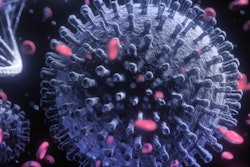
The COVID-19 pandemic caused an 8% dip in breast cancer screening rates in communities of color and low income across the U.S., reversing forward momentum seen in the year prior, according to research published August 26 in Cancer.
A team led by Stacey Fedewa, PhD, from the American Cancer Society (ACS) found that the pandemic may have caused over 47,000 missed mammograms in 32 community health centers across the country, halting an 18% increase seen in 2018-2019.
"The percentage point does not sound very large, but the absolute number of women impacted is," Fedewa told AuntMinnie.com. "This highlights the need for resources to support interventions to improve breast cancer screening rates."
The pandemic caused delays in breast cancer screening as healthcare workers were called upon to help diagnose and treat COVID-19 patients. Multiple studies have measured the pandemic's impact on screening rates for preventive services such as breast cancer, with some saying the pandemic exacerbated existing disparities.
The group wanted to measure changes in breast cancer screening rates during the pandemic among 32 community health centers that provide healthcare to people who are medically underserved. The centers are participants in the ACS's change grant program.
The researchers looked at women aged 50 to 74 years who had a medical visit within the past 12 months and received a screening mammogram within the last 27 months for June 2018, July 2019 and July 2020. There were 142,207, 142,003, and 150,630 women who had a medical visit in the past 12 months and were included in the 2018, 2019, and 2020 breast cancer screening rate denominators, respectively.
Overall screening rates were compared for these timeframes, as well as a clinic's region, urban and rural status, and demographic characteristics.
Screening rates rose at a statistically significant rate, from 45.8% to 53.9% between 2018 and 2019, and then declined to 49.6% between 2019 and 2020. The authors said that if the 2018-2019 trends continued through 2020, 63.3% of women would have been screened in 2020 compared with the 49.6% that were.
The decline caused by the COVID-19 pandemic translates to 47,517 fewer mammograms and 242 missed breast cancer diagnoses, including 166 invasive breast cancers and 76 cases of ductal carcinoma in situ.
"If breast cancer screening rates remained flat at 53.9% between 2019-2020, there would have been 6,477 fewer mammograms, resulting in 33 missed breast cancer diagnoses," the team wrote.
Fedewa and colleagues also found that clinics with a higher proportion of Black patients and a lower proportion of uninsured patients experienced greater declines with screening rate ratios of 0.88 and 0.85, respectively. No statistically significant changes were found among clinics located in southern states.
The researchers called for policies to support and resources to identify women in need of screening to help return screening rates to prepandemic levels. Fedewa told AuntMinnie.com that multicomponent interventions such as patient navigation, as well as reminders to physicians and patients, have been shown to improve cancer screening rates.
She also said clinics in the study received funding to implement these strategies, which "may have" led to increases in breast cancer screening rates before the pandemic.
"We know what can improve breast cancer screening rates during 'normal' times and we may need to intensify these efforts during the pandemic," Fedewa said.
The team plans to continue tracking breast cancer screening rates in these 32 clinics and more broadly in other community health centers.




















